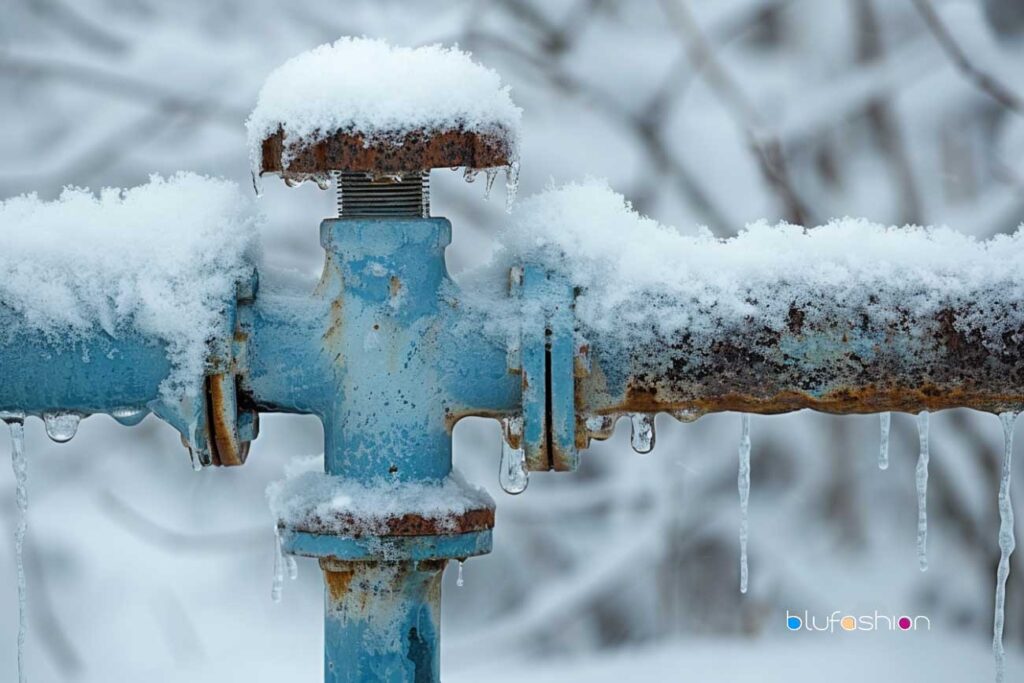Winterizing plumbing pipes is a process that prepares them for freezing. Freezing can cause disasters in a house. This process is good when the house will be empty for a long time. Then, no water will run through the pipes. So let’s learn how to winterize plumbing pipes. It is important to highlight: the problem is not the ice expanding. It is the pressure from this expansion that cracks the pipes.
Prepare a plant on how and where to start. It is easy to skip a step so you might want to draft a checklist to have all parts of the house worked. To start, empty the water heater. Then, drain all the water from the pipes and fill all fixtures with anti-freeze.
| Winterize Plumbing Pipes Steps | How to Prevent Freezing Pipes |
|---|---|
| 1. Turn off the main water valve, water pump, and water heater. | 1. Identify and inspect pipes most likely to freeze, such as those near outside walls, windows, and unheated spaces. |
| 2. Open all drain valves and taps, and keep them open throughout the winter. | 2. Seal any cracks or openings in walls, floors, and ceilings to prevent cold air from entering. |
| 3. Use air compressors to blow out excess water from the pipes. | 3. Protect un-insulated pipes with insulation sleeves or wrapping, ensuring no gaps are left. |
| 4. Drain the water tank completely, using a garden hose if necessary. | 4. Install slip-on foam pipe insulation, especially on plastic piping. |
| 5. Drain the holding tank and add antifreeze to the jet pump case. | 5. Maintain a heat source inside the building to counteract cold air. |
| 6. Flush the toilet and add antifreeze if you can’t remove all the water. | 6. Use heat tapes to protect pipes from freezing, but be aware of potential fire hazards and follow safety tips from the U.S. CPSC. |
| 7. Add antifreeze to sink and tub drains to prevent water from freezing in the traps. |
Related post: A Plumbing Primer for New Homeowners.
Winterize Plumbing Pipes Steps
Follow these steps to winterize plumbing pipes in a house:
- Shut off the main water valve and turn off the water pump and the water heater. By doing this, you will also protect the heating elements. They won’t work if there is no water in the tank.
- Open all drain valves and all taps too. Follow the list you have created so you are sure all taps are open. A closed tap could create vacuum holding water in the pipe. All valves and taps should remain open throughout all the winter so any water can drain out from the pipe.
- Using air compressors blow excess water standing in the pipes.
- Open the drain valve in your water tank and let it discharge until it is empty. Be careful. Sometimes, these hot water tanks lack floor drains. You will need to connect a garden hose to them.
- Drain all the water left in the holding tank, especially the water in the rubber diaphragm. It’s used with the water tank to build our pressure. As an additional protective measure, add antifreeze to the jet pump case.
- Flush the toilet to remove as much water as you can from the tank and the toilet bowl. If you can’t remove all the water, add antifreeze. It will stop any water from freezing and cracking the toilet.
- Check all sink and tub drain that could have waste water traps. Add some antifreeze on each one of them to prevent water from freezing and cracking the traps.
Suggested Reading: How To Deal With Plumbing Emergencies At Home.
How to Prevent Freezing Pipes
If you have enough time, check the plumbing in the building. Find the pipes most likely to freeze. Look for pipes outside walls and windows. Also, look for un-insulated pipes and pipes near unheated spaces. It is also important to verify all walls, floors and ceilings for cracks and/or openings. If you find holes during your inspection, caulked them to keep cold air from entering those gaps.
Be sure to follow these tips:
- Un-insulated pipes shall be protected with insulation sleeves or wrapping. Do not leave any gaps without insulation as cold air might affect the pipe.
- Add slip-on foam pipe insulation if possible. Plastic piping is more tolerant of freezing than old copper or steel water pipes.
- Keep a heating source inside the building. It will release hot air to counteract cold air.
- Use heat tapes to protect pipes from freezing. Heat tapes are a preferred way to protect pipes from freezing. But, be aware that they might bring extra hazards. The U.S. CPSC has given safety tips for homeowners. They are for using heat tapes to prevent fires.
Protect your home from costly water damage this winter! Follow our easy guide. It shows how to winterize your pipes and prevent freezing. Don’t wait until it’s too late – take action now and ensure your pipes are ready to withstand the cold season. Click here to learn more and keep your home safe and dry all winter long!
We recommend these resources:






